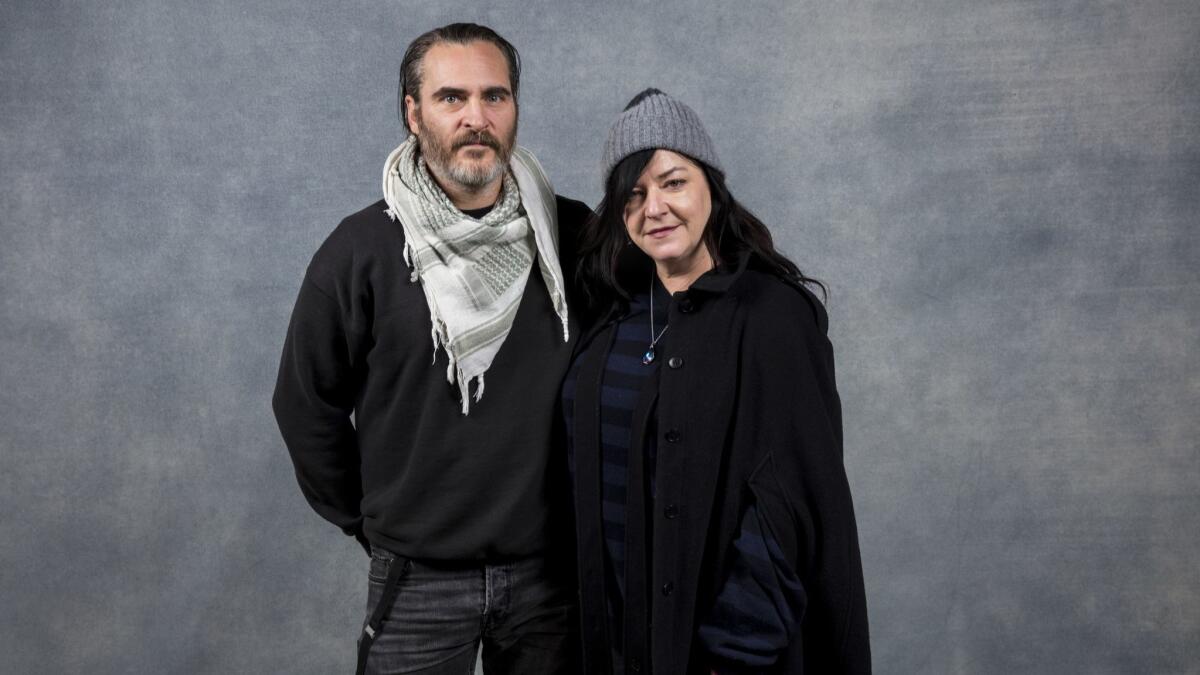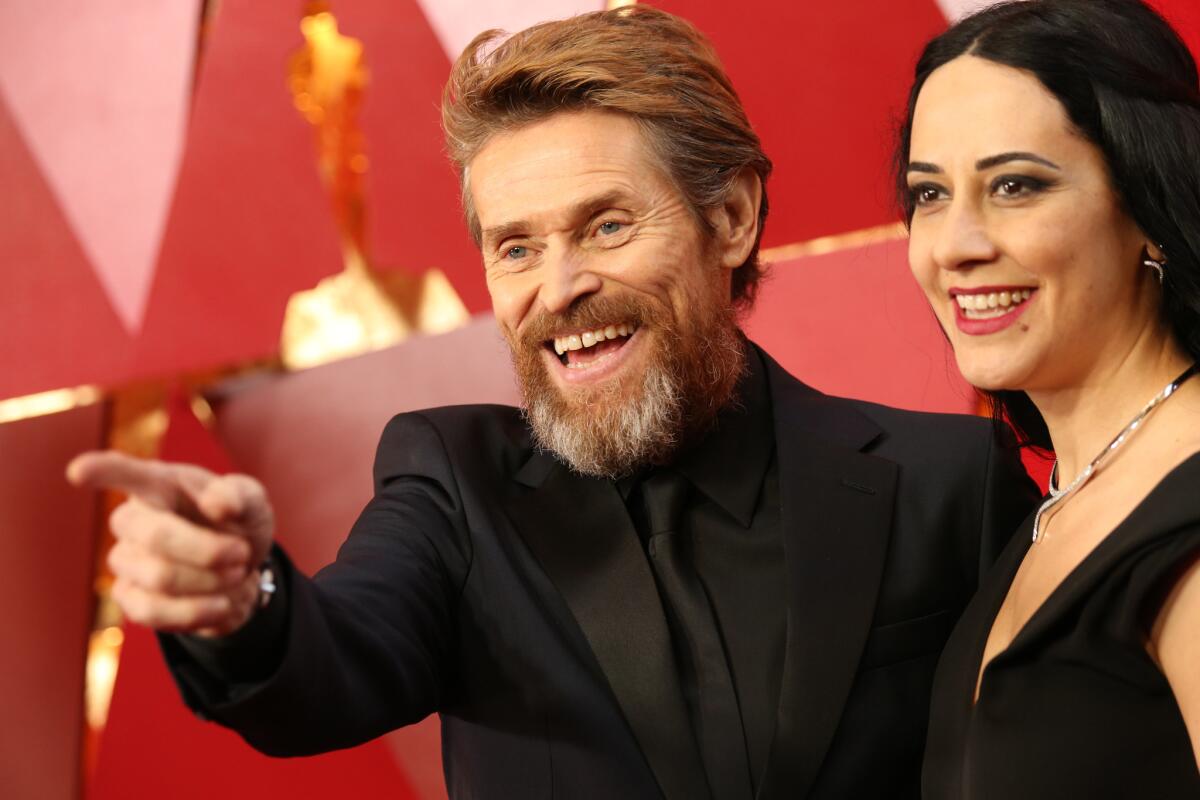How many female directors have the recent best actor Oscar nominees worked with?

- Share via
There are around 3.85 billion women in the world, about half the population. And only five of them have ever been nominated for the directing Oscar.
It’s no secret there are no female nominees in the directing category this year. There has been only one in the last 11 years (Greta Gerwig for “Lady Bird”). This, despite the finding of the USC Annenberg Inclusion Initiative’s recent study that a record number of women made major films in 2019 (the study only concerned the 100 top-grossing films of each of the last 13 years; 1,300 total movies examined).
Gerwig’s “Little Women,” Lulu Wang’s “The Farewell,” Olivia Wilde’s “Booksmart,” Céline Sciamma’s “Portrait of a Lady on Fire,” Lorene Scafaria’s “Hustlers,” Mati Diop’s “Atlantics,” Alma Har’el’s “Honey Boy,” Laure de Clermont-Tonnerre’s “The Mustang” and Marielle Heller’s “A Beautiful Day in the Neighborhood” were among last year’s crop of female-directed films to make critics’ groups’ best-of lists and collect major prizes. But not a directing nomination from the academy.
It’s no fluke: 2018 saw Debra Granik’s “Leave No Trace,” Chloe Zhao’s “The Rider,” Heller’s “Can You Ever Forgive Me?,” Tamara Jenkins’ “Private Life” and Lynne Ramsay’s “You Were Never Really Here,” among others, also getting passed over for Oscar directing love.
Annenberg found that 10.6% of the top 100-grossing films last year were made by women — a far cry from the 50% that would be representative, but a significant improvement over the 4.8% average the study found over a 13-year period.
But The Times wondered if there might be a link between the academy’s perception of women making “Oscar-worthy” films and the directors who work with “Oscar-worthy” talent.

We examined the complete filmographies of the 23 male actors nominated for leading roles in the last five years. We found that out of about 875 theatrical releases (not counting animation or voice-over work) the actors made over 38 years, 61 of the projects were directed by women. That’s about 7%.
So the average performer to reach the height of a lead actor nomination has made more than 40 live action theatrical features, of which fewer than three were directed by women.
Running the numbers for lead actress nominees from the same time period provides a result nearly double the lead actors’ average — 12.8% of their films were by female helmers. But the nominees’ collective resumes differ in some notable ways. Three of the lead actress nominees have appeared in five or fewer films to date — Cynthia Erivo, Lady Gaga and Yalitza Aparicio. And the British veteran Charlotte Rampling and French titan Isabelle Huppert stand out. Both have worked primarily in Europe, where Rampling has made 10 of her 95 films with female directors, while Huppert has worked on 27 female-directed films out of 120 total films.
Otherwise, the tallies range from Meryl Streep and Frances McDormand, who have each made seven films with female directors, to Ruth Negga and Glenn Close, who have made only one apiece.
To be clear, this admittedly limited sample is not meant as an indictment of the actors: It can take decades to reach the point in a career at which an actor can get a movie made, much less select its creative team. And actors, even those blessed with the industry’s highest honor, obviously have far less say over what films get made, and who makes them, than studio executives and financiers.
Also, by limiting this list to narrative, non-animated features, for instance, we’re not counting Matt Damon’s voiceover work in the female-directed documentary “Howard Zinn: You Can’t Be Neutral on a Moving Train” and animated “Spirit: Stallion of the Cimarron.” And including cameos somewhat artificially boosts some totals. (One of Leonardo DiCaprio’s female-directed films is the 1992 thriller “Poison Ivy,” in which he has a mere five-second cameo. The other two were made before “Titanic” catapulted him to mega-stardom in 1997.)
Still, opportunities to encourage change are available for those who look for them. When Tom Hanks read a 2015 article in the New York Times detailing the struggles women in the director’s chair face in Hollywood, he resolved to seek out more material with female filmmakers. This year his turn as Mr. Rogers in Heller’s “Beautiful Day” is the only male performance nominated from a female-directed film. (The two-time Oscar winner has previously worked with Penny Marshall, Nora Ephron, Meg Ryan and Lilly and Lana Wachowski.)
When the question, “Why does the academy nominate so few female directors for the Oscar?” is frequently answered by, “Because there aren’t enough Oscar-caliber movies made by women,” finding a 93.3%-6.7% ratio in movies starring lead actors considered prominent in the eyes of the academy would seem to underscore just how unevenly distributed these opportunities are ... for more than half the population.
Moreover, despite the presence of several major names on the list of female directors who have worked with the recent lead actor nominees — including Marshall, Gillian Armstrong, Kathryn Bigelow, Jane Campion, Greta Gerwig and Mira Nair — only Marshall, Campion and Valerie Faris (who makes films with co-director Jonathan Dayton) worked with multiple recent lead actor nominees. Each worked with two apiece.
Meanwhile, Leonardo DiCaprio, Andrew Garfield, Adam Driver, Willem Dafoe, Jonathan Pryce and Daniel Day-Lewis have all worked with Martin Scorsese. Christopher Nolan worked with Casey Affleck, Timothée Chalamet and Damon on “Interstellar” alone. (And with DiCaprio, Christian Bale and Gary Oldman on other films.)

The woman who made the most films featuring a recent lead actor nominee is singer-writer-composer and award-nominated director Giada Colagrande, whose three films therein all star her husband, Dafoe.
One positive thing the data suggests, in line with USC’s study: The number of movies made by female directors working with eventual Oscar-nominated male actors is trending upward over time, though at a very slow and extremely inconsistent pace.
The Annenberg findings are encouraging in this regard, and studios such as Universal and STX can boast that 25% of their entire 2019 slates examined by the study were female-directed. Netflix’s gigantic roster was 20% female-directed (20% of a lot is a lot). The more female-directed movies, the more chances those directors (and the actors in them) have to impress academy voters.
And the more chances for academy voters to improve on the organization’s own five-in-460, or 1.9%, directing nominees track record.
Staff writer Josh Rottenberg contributed to this report.
Predicting the four acting races for the 2020 Oscars is easy this year, but there’s still drama in the best picture race and others
More to Read
Only good movies
Get the Indie Focus newsletter, Mark Olsen's weekly guide to the world of cinema.
You may occasionally receive promotional content from the Los Angeles Times.












